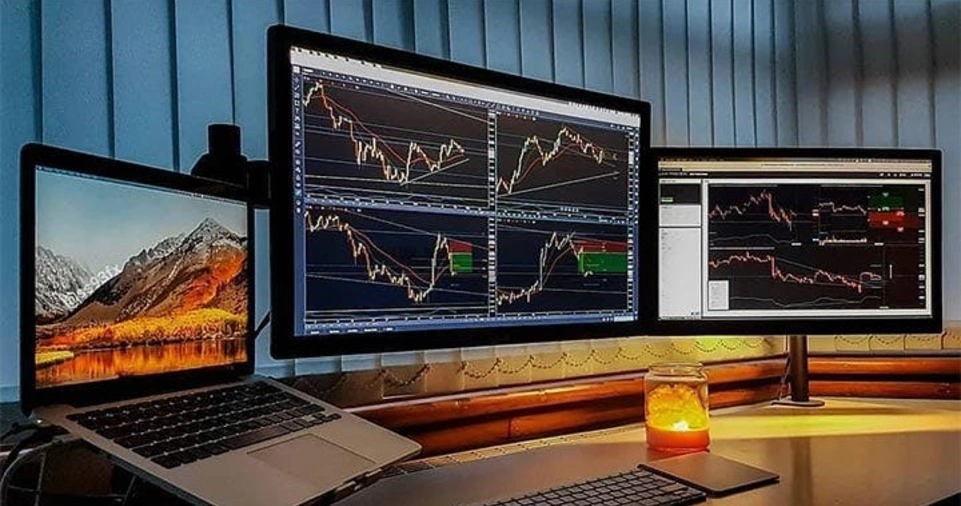Cryptocurrency trading is highly volatile and requires precise strategies to maximize profits and minimize risks.
Technical analysis (TA) is an essential approach that helps traders make informed decisions by analyzing past price movements and market trends.
This article explores the best technical analysis tools for crypto trading, their applications, and strategies for effective use.
What is Technical Analysis?
Technical analysis (TA) is the study of historical price data and trading volume to predict future price movements.
Unlike fundamental analysis, which focuses on project fundamentals, TA relies on chart patterns, indicators, and trading signals.
By utilizing TA, traders aim to identify trends, potential reversals, and entry or exit points for their trades.
Why Use Technical Analysis in Crypto Trading?
Technical analysis provides traders with several advantages, including:
- Objective Decision-Making: Traders rely on patterns and signals rather than emotions.
- Versatility: TA can be applied across various timeframes, making it useful for day trading, swing trading, and long-term investing.
- Identifying Market Sentiment: Price patterns and indicators help gauge market psychology and trends.
- Risk Management: Effective use of TA tools enables traders to set stop-loss and take-profit levels to protect investments.
ALSO READ: How to Buy and Sell NFTs on Popular Marketplaces?
Essential Technical Analysis Tools for Crypto Trading

Candlestick Patterns
Candlestick charts are one of the most popular tools for crypto traders. Each candlestick represents an asset’s price movement within a specific timeframe.
By analyzing candlestick formations, traders can anticipate potential reversals and continuations.
Common Candlestick Patterns:
| Pattern | Meaning |
|---|---|
| Bullish Engulfing | Indicates a potential upward reversal |
| Bearish Engulfing | Signals a potential downward reversal |
| Doji | Suggests market indecision |
| Hammer | Indicates potential bullish reversal |
| Shooting Star | Suggests potential bearish reversal |
| Morning Star | Strong bullish reversal signal |
| Evening Star | Strong bearish reversal signal |
Support and Resistance Levels
Support and resistance levels are key price points where buying or selling pressure prevents further price movement. Identifying these levels is crucial for placing strategic trades.
- Support Level: A price level where an asset tends to stop falling and bounce back.
- Resistance Level: A price level where an asset struggles to move higher.
How to Identify Support and Resistance?
- Use historical price data.
- Identify previous highs and lows.
- Apply moving averages (e.g., 50-day and 200-day MA).
- Use Fibonacci retracement levels.
Moving Averages (MA)
Moving Averages smooth out price data and help identify trends by averaging past price points.
| Type of MA | Description |
|---|---|
| Simple Moving Average (SMA) | Averages prices over a specific period |
| Exponential Moving Average (EMA) | Gives more weight to recent prices for a faster response |
| Weighted Moving Average (WMA) | Assigns greater significance to recent price data |
Application:
- A short-term MA crossing above a long-term MA signals a bullish trend (Golden Cross).
- A short-term MA crossing below a long-term MA signals a bearish trend (Death Cross).
Relative Strength Index (RSI)
RSI is a momentum indicator that measures overbought or oversold conditions.
| RSI Value | Interpretation |
|---|---|
| Above 70 | Overbought (potential price drop) |
| Below 30 | Oversold (potential price rise) |
| 50 | Neutral trend |
Bollinger Bands
Bollinger Bands measure market volatility and consist of:
- Middle Band: 20-day moving average.
- Upper Band: 2 standard deviations above the middle band.
- Lower Band: 2 standard deviations below the middle band.
Trading Strategy:
- When prices touch the upper band, the asset may be overbought.
- When prices touch the lower band, the asset may be oversold.
MACD (Moving Average Convergence Divergence)
MACD identifies trend direction and strength using:
- MACD Line (difference between 12-day and 26-day EMA)
- Signal Line (9-day EMA of MACD line)
- Histogram (difference between MACD and Signal Line)
Trading Strategy:
- When MACD crosses above the signal line: Bullish signal.
- When MACD crosses below the signal line: Bearish signal.
- A larger histogram indicates increasing momentum.
Fibonacci Retracement
Fibonacci retracement helps identify potential support and resistance levels based on key percentages: 23.6%, 38.2%, 50%, 61.8%, and 78.6%.
Application:
- Traders use Fibonacci levels to place stop-loss and take-profit orders.
- Used in conjunction with other indicators for confirmation.
- Helps find optimal trade entry and exit points.
Volume Analysis
Volume is a critical factor in confirming trends. High trading volume during a price movement indicates strength, while low volume suggests weakness.
| Volume Indicator | Purpose |
|---|---|
| On-Balance Volume (OBV) | Measures cumulative buying and selling pressure |
| Volume Weighted Average Price (VWAP) | Determines the average price weighted by volume |
| Accumulation/Distribution Line | Evaluates money flow into or out of an asset |
Ichimoku Cloud
The Ichimoku Cloud is a comprehensive indicator that provides trend direction, support/resistance levels, and momentum.
Key Components:
- Kumo (Cloud): Identifies future support/resistance levels.
- Tenkan-sen (Conversion Line): Short-term trend indicator.
- Kijun-sen (Base Line): Medium-term trend indicator.
- Chikou Span (Lagging Line): Helps confirm trend direction.
ALSO READ: How to Earn Passive Income Through DeFi Staking and Yield Farming?
Advanced Trading Strategies Using Technical Analysis

Trend Following Strategy
- Use Moving Averages and Ichimoku Cloud to follow the trend.
- Avoid trading against strong trends.
Breakout Trading
- Identify support and resistance levels.
- Enter a trade when the price breaks through a significant level with strong volume.
- Confirm breakouts using RSI and MACD.
Momentum Trading
- Utilize RSI and MACD to gauge momentum.
- Enter trades when indicators confirm strong price movement.
- Use Fibonacci retracement for profit targets.
Scalping
- Use Bollinger Bands and Volume Analysis to take advantage of small price movements.
- Close trades quickly to capture profits.
Swing Trading
- Identify reversal patterns using candlestick charts and Fibonacci retracement.
- Hold trades for days or weeks based on market swings.
- Combine with MACD and Ichimoku Cloud for confirmations.
ALSO READ: How to Safely Store Your Cryptocurrencies?
Conclusion
Technical analysis is a powerful tool for crypto traders when used correctly. By understanding and applying the right indicators, traders can make informed decisions, improve their success rates, and manage risks effectively.
Combining multiple strategies and staying updated with market trends will lead to better trading outcomes.







